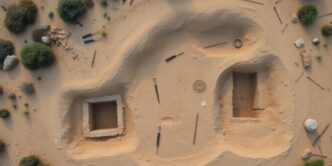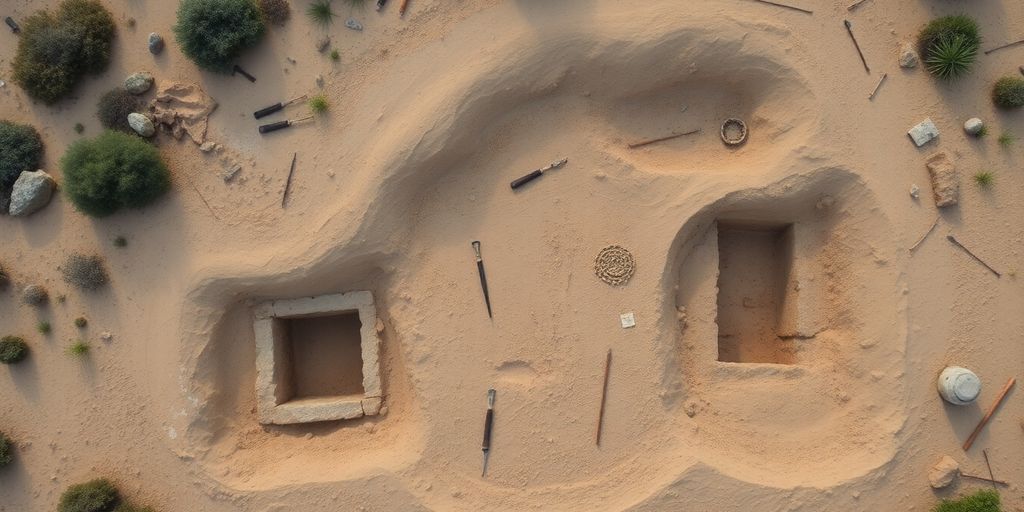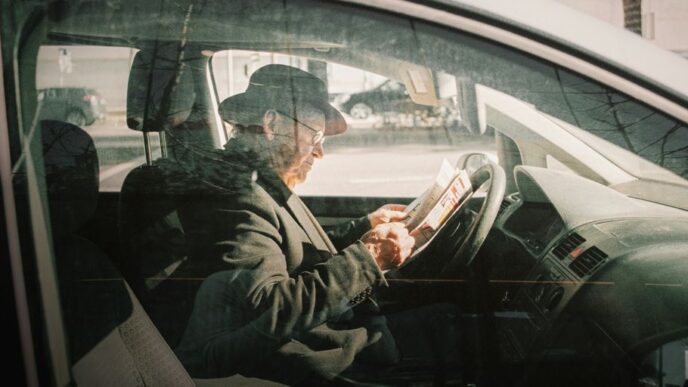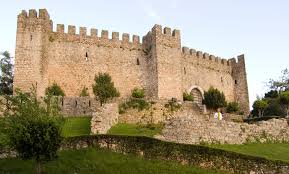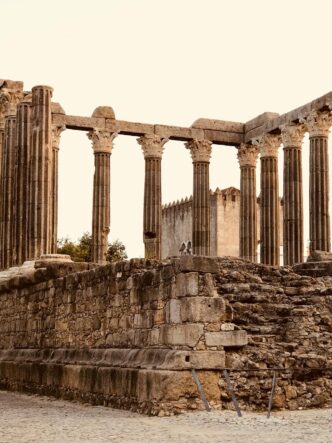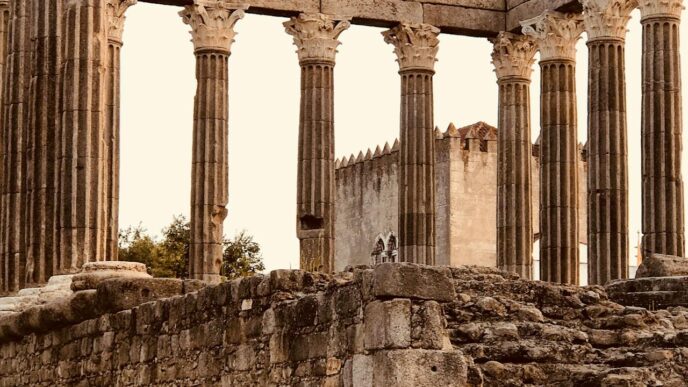Archaeologists in Faro, southern Portugal, have made a significant discovery by unearthing three Roman tombs at the site of the ancient city of Ossónoba. The graves, believed to date back to the 5th or 6th century, contained the remains of a man, a young woman, and a baby, all sealed with limestone slabs likely repurposed from older monumental structures. This excavation, conducted by a team from ERA Arqueologia, was part of a larger project aimed at assessing the archaeological potential of a 5,000 square meter area designated for future real estate development.
Key Takeaways
- Three Roman tombs discovered in Faro, Portugal, dating back to the 5th or 6th century.
- Remains include a man, a young woman, and a baby, indicating possible familial ties.
- Excavation revealed numerous Roman artifacts, including ceramics and coins from the reign of Emperor Constantine.
The excavation site, previously a bus depot, has revealed not only human remains but also remnants of Roman structures and various artifacts that provide insight into daily life during that era. Francisco Correia, the lead archaeologist, noted that the careful construction of the graves suggests a level of social and economic status among the individuals buried there.
Biological anthropologist Cláudia Maio pointed out that the tombs appear to have been looted in the past, with items such as bracelets, necklaces, and rings likely taken. Despite this disturbance, the graves’ elaborate construction indicates that the deceased were afforded a significant level of care and respect.
Insights From The Excavation
- Grave Contents: The graves contained the remains of:
- Artifacts Found: The excavation yielded a variety of Roman artifacts, including:
The proximity of the graves raises questions about the relationships between the individuals, although definitive conclusions cannot yet be drawn. The team plans to conduct DNA tests and isotopic analysis on the skeletal remains to uncover more about their origins, dietary habits, and potential familial connections.
Archaeological Significance
This discovery highlights the rich archaeological potential of the region, which has a history of significant finds. The area surrounding the excavation site includes notable landmarks, such as a 17th-century convent and the location of the famous Ocean God mosaic. The findings suggest that Ossónoba was a complex urban landscape, with both residential and industrial activities coexisting.
Joaquim Ferreira, representing the project developer, emphasized the importance of conducting thorough archaeological assessments before initiating construction projects. This proactive approach to heritage preservation is crucial in ensuring that significant historical findings are not overlooked.
As the ERA Arqueologia team processes the collected materials, anticipation grows for the next phase of research and analysis, which promises to shed further light on the lives of those who once inhabited this ancient city.

